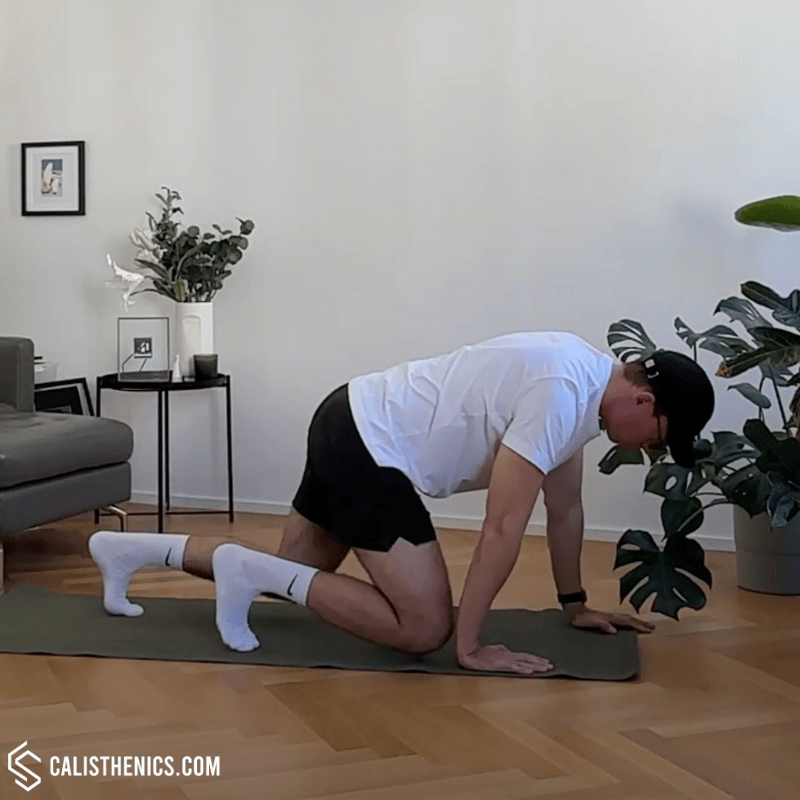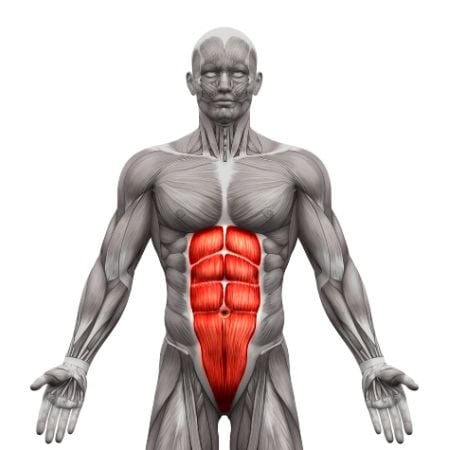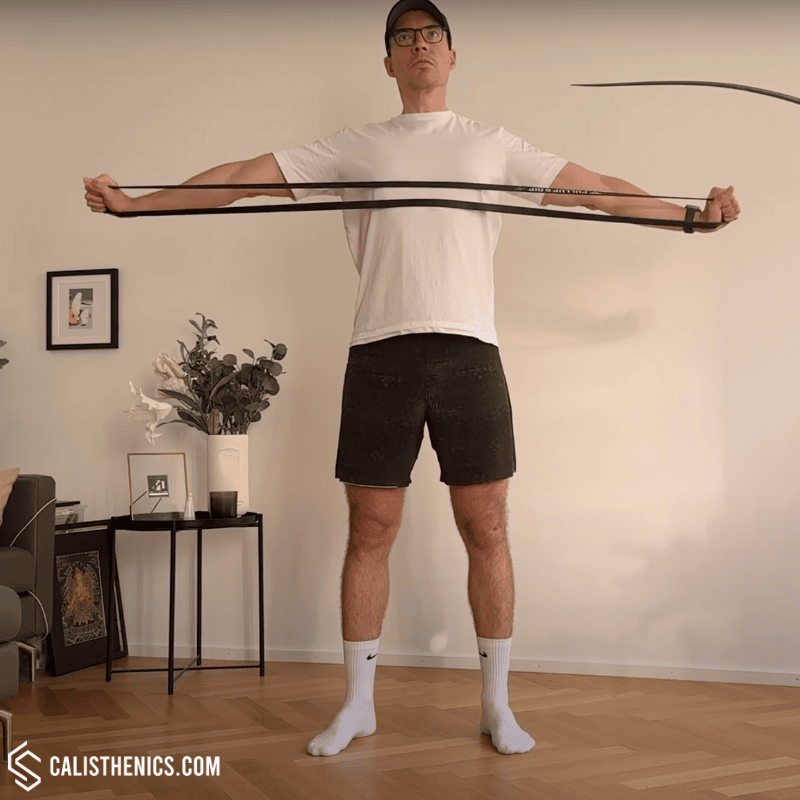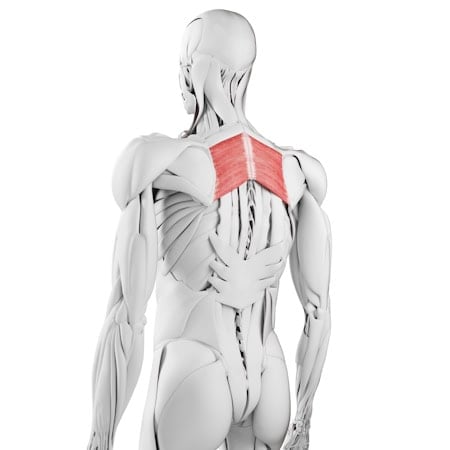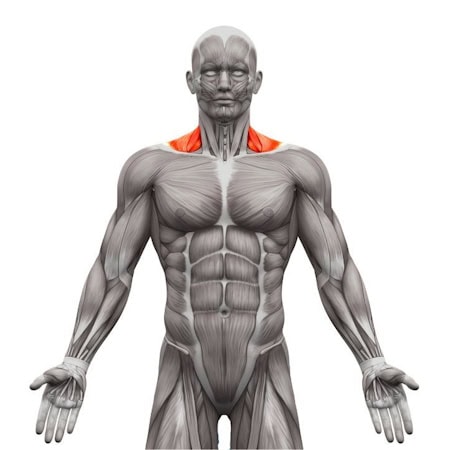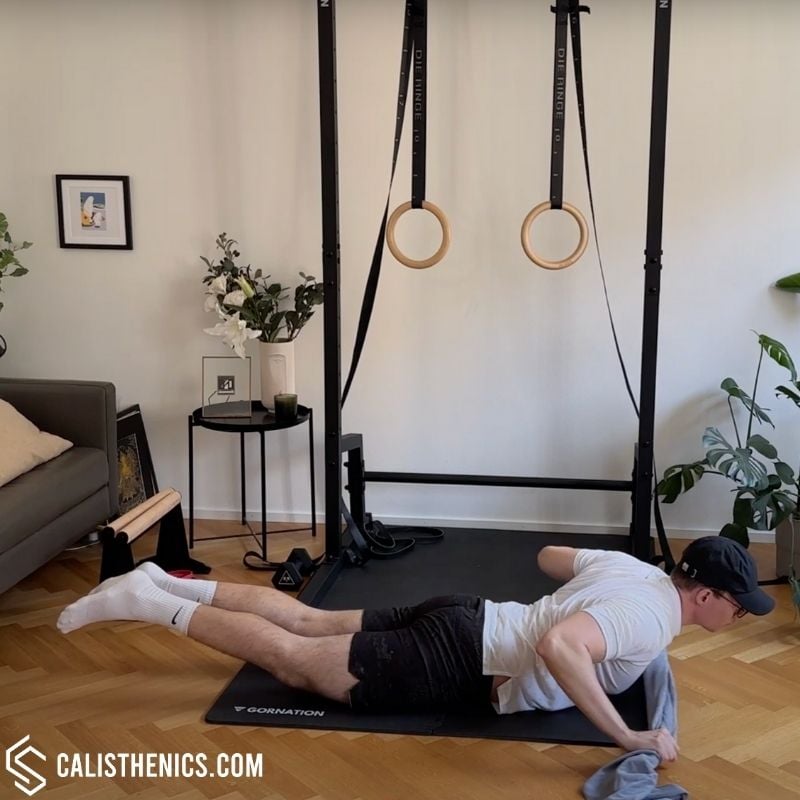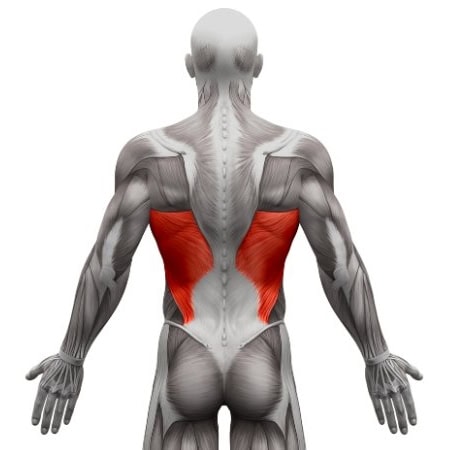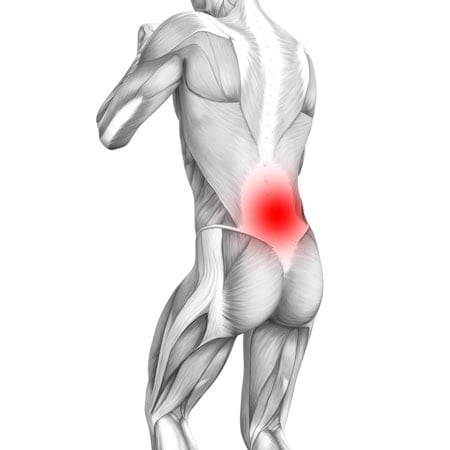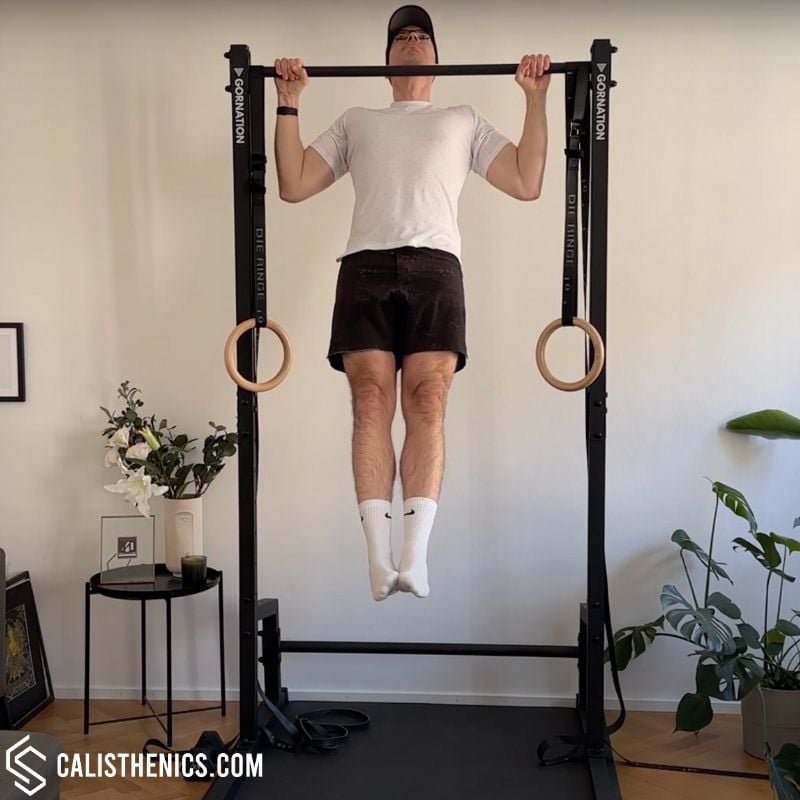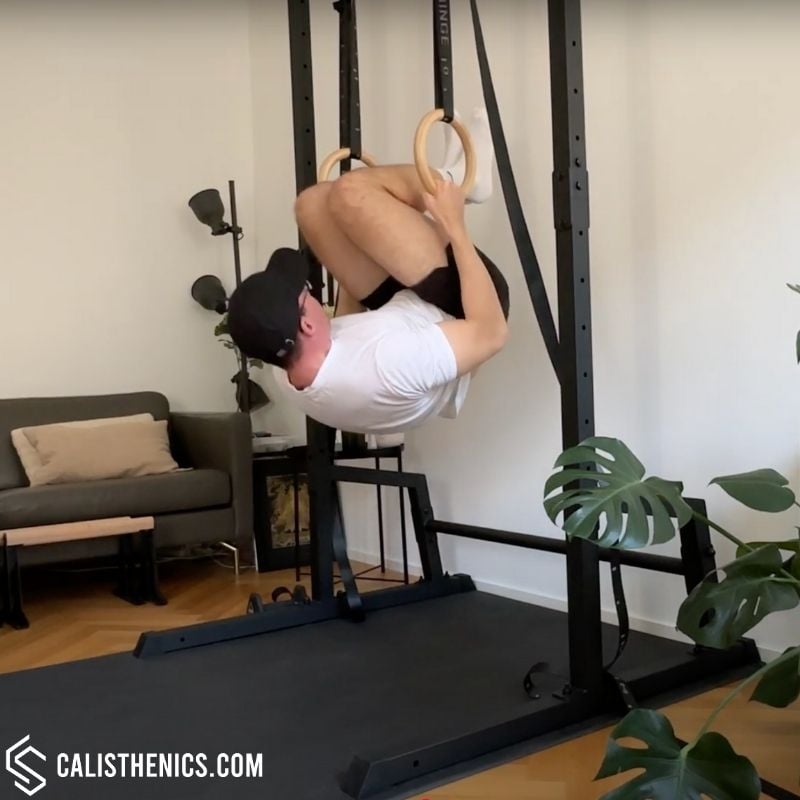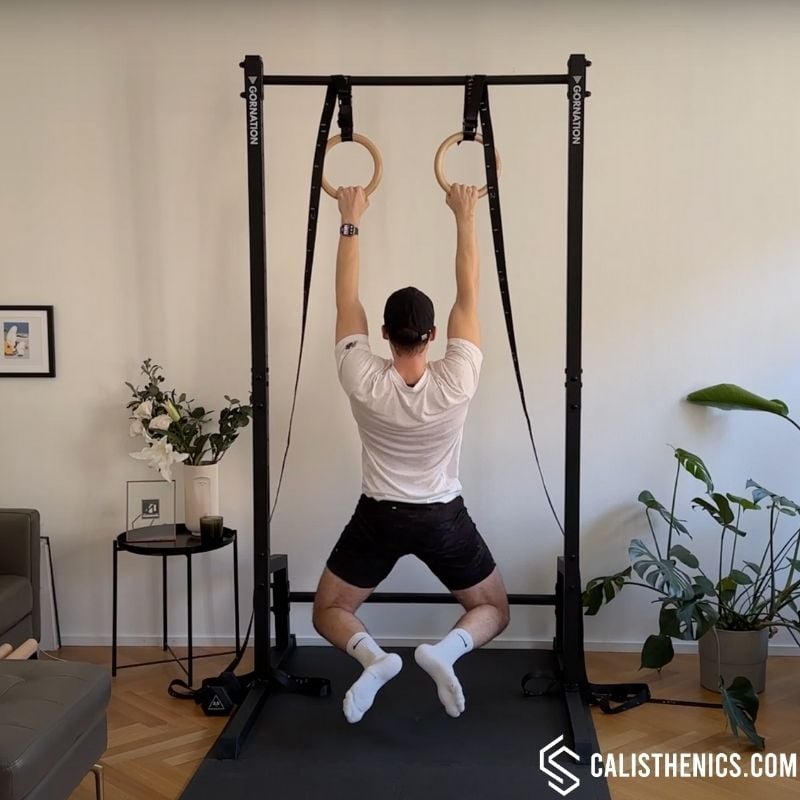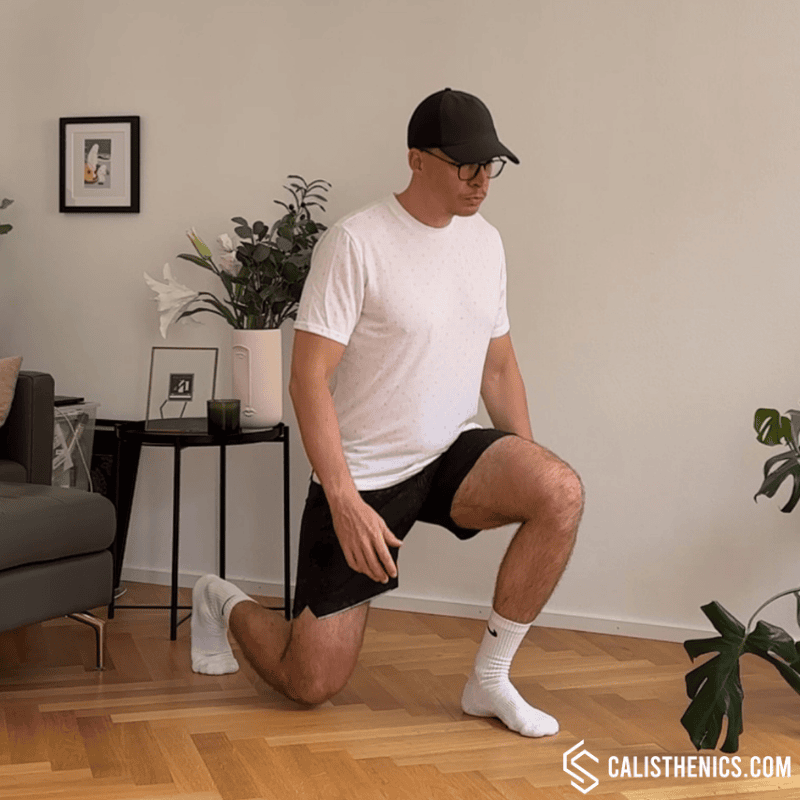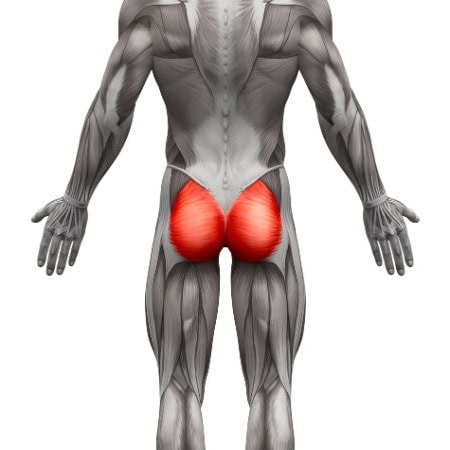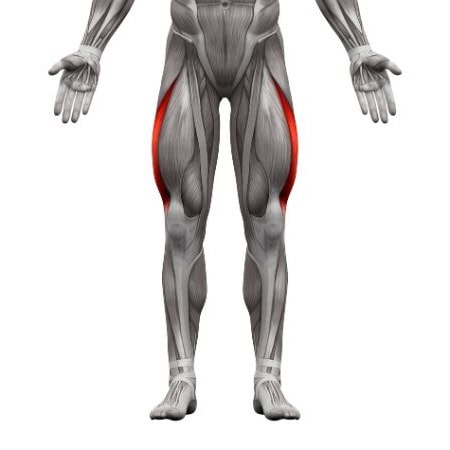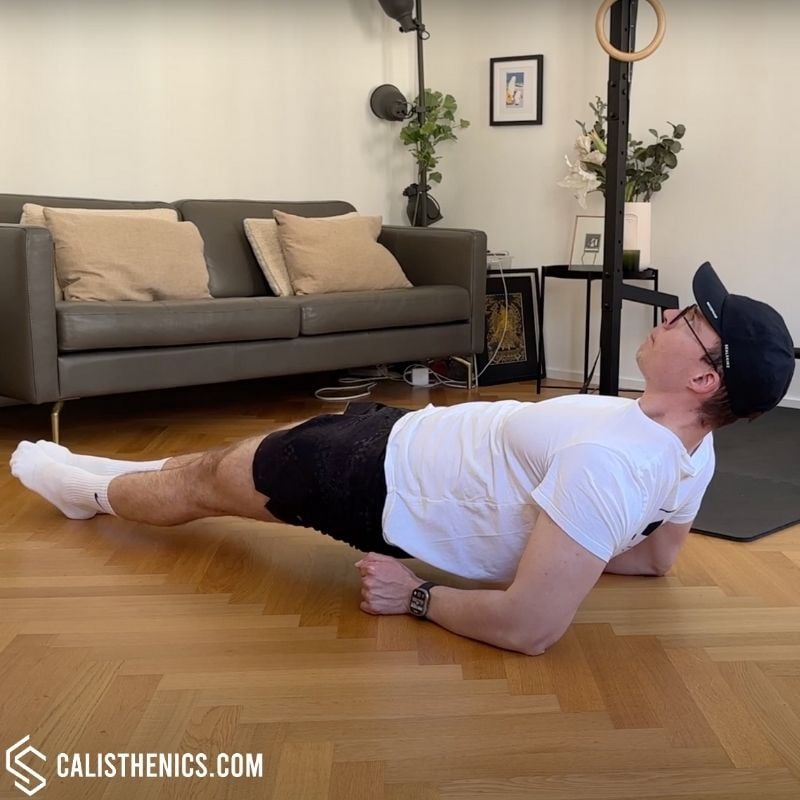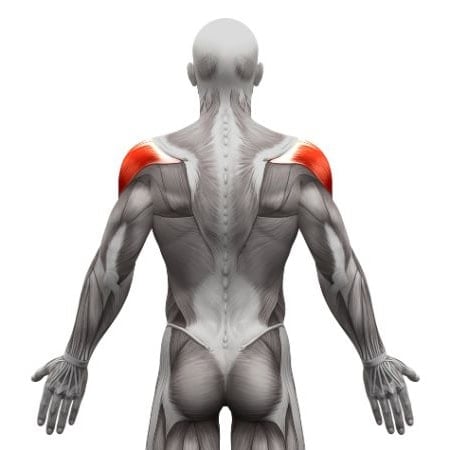Pull 10: Increasing Back Muscle Strength with Slower Eccentrics and Tuck Front Lever Rows
🎯 Workout Description:
You’ll return to negative pull-ups, but with more advanced row variations and longer hangs to push grip and upper back endurance. This is one of the most complete back workouts in the program—it’s going to leave you torched in the best way.
👤 Who It’s For:
Athletes who can control 5-second negative pull-ups and want to build endurance and strength for multiple reps.
🧰 Equipment Needed:
Pull-up bar ▶️ check out the best Pull-Up Bars for calisthenics
- Both ▶️ Gymnastics rings and ▶️ these Dip Bars are great for bodyweight rows
Warm-Up
Goal: Prime the posterior chain and activate vertical pulling muscles.
Format: Circuit – 2 rounds, no rest between exercises or rounds
-
30 sec Bear Crawl
-
10x Doorframe Rows
-
12x Superman Towel Rows
Don’t rush—control and scapular movement matter more than speed here.

No muscle groups found for this post.
Tips
-
Move slowly and deliberately to avoid sudden movements.
-
Keep circles smooth and controlled—avoid jerky motions.
-
Breathe steadily and deeply to maximize relaxation and blood flow.
-
Gradually increase the range of motion as your joints warm up.
-
Perform each movement for 15-20 seconds, or until joints feel loosened.
-
Customize your routine slightly based on the specific demands of your workout.
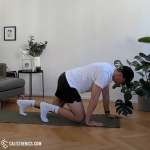
Muscle group:
Tips
-
Keep the Core Tight: Engage your core throughout the movement to prevent your hips from lifting or sagging.
-
Minimize Hip Movement: The goal is to keep your hips stable, avoiding excessive side-to-side motion. This helps maximize core engagement and balance.
-
Small Steps: Take smaller, controlled steps to improve balance and coordination while keeping the movement fluid.
-
Controlled Breathing: Breathe steadily as you crawl, exhaling as you move each hand and foot forward, and inhaling as you stabilize. Proper breathing helps maintain core stability.
-
Hand and Shoulder Alignment: Keep your hands under your shoulders and ensure each step forward is controlled to reduce strain on your wrists and shoulders.
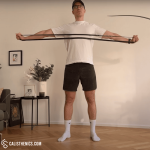
Tips
-
Squeeze Your Shoulder Blades: Focus on squeezing your shoulder blades together as you pull the band apart. This ensures that you engage the muscles of your upper back effectively.
-
Keep Arms Straight but Not Locked: Maintain straight arms during the movement, but avoid locking your elbows to protect your joints and maximize muscle engagement.
-
Core Engagement: Keep your core tight to prevent arching your back as you pull the band apart. A stable core helps maintain proper posture and prevents compensations.
-
Controlled Movement: Perform the movement slowly and with control, both when pulling the band apart and when returning to the starting position. Avoid jerking or using momentum.
-
Breathing: Exhale as you pull the band apart and inhale as you return to the starting position. Proper breathing helps maintain focus and control.
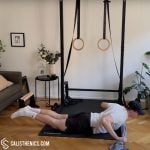
Muscle groups:
Tips
-
Keep Constant Tension on the Towel: Actively pull outward to engage shoulders and upper back more effectively.
-
Lift Your Chest Slightly for Full Activation: Avoid lying completely flat—slight elevation increases muscle engagement.
-
Slow Down the Movement: Take 3-4 seconds to extend the arms back out, increasing time under tension.
-
Breathe Properly: Inhale when extending the arms, exhale when pulling the towel toward the chest.
-
Engage the Glutes & Core: Maintain a tight posterior chain to stabilize the movement.
-
Use a Thicker Towel or Band for Added Resistance: This helps increase muscle engagement and pulling endurance.
Strength
Goal: Combine long eccentrics, advanced rows, and grip endurance for full-back strength.
Structure:
-
Superset A (3 rounds): A1 + A2, rest 90–120 sec
-
Set B (2 sets): Performed alone, rest 45 sec
🟦 Superset A:
-
A1: Negative Pull-Ups (5–6 sec lower) – 3–4 reps
-
A2: Tuck Front Lever Rows (or BW Rows w/ Elevated Feet) – 5–6 reps
→ Rest 90–120 sec after each round
🟩 Set B:
-
Scapula Pull-Ups or Hanging Hold – 30 seconds
→ Rest 45 sec between sets
You’re now training like someone who can nearly do full reps. Give each negative full attention—control from the top until your arms are straight.
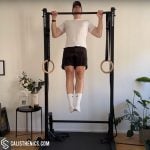
Muscle group:
Tips
-
Start with a descent of 3-5 seconds, gradually increasing to 6-8 seconds as you gain strength.
-
Engage your core and glutes throughout the movement to stabilize your body.
-
Breathe steadily—inhale at the top and exhale slowly during the descent.
-
Use a slight pause at the bottom before stepping back up to reinforce control.
-
Experiment with grip variations (neutral grip may feel more comfortable for some athletes).
-
Train consistently—negative pull-ups should be performed 2-3 times per week for optimal progress.
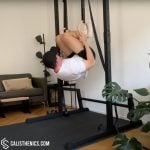
Easier alternative: Bodyweight Rows with Elevated Feet
Tips
-
Keep your knees tucked tightly to reduce unnecessary movement.
-
Squeeze your glutes and core to maintain a rigid body line.
-
Use a controlled tempo to maximize strength gains—especially on the eccentric phase.
-
Adjust the angle of your body (pushing your knees further away from your chest into an advanced tuck front lever) to find an appropriate difficulty level.
-
Breathe steadily and avoid holding your breath, as it can cause unnecessary tension.
-
If grip is an issue, try wrapping your thumbs around the bar or rings for extra security.
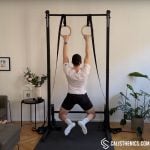
You can also do it on a pull-up bar.
If scapula pull-ups are too hard: just hang from the bar, either active hang or passive hang.
Tips
-
Keep Arms Straight – Do not bend your elbows; the movement should come only from the scapula.
-
Engage Your Core – Helps prevent excessive body movement or swinging.
-
Control the Descent – Avoid dropping too fast; lower with control.
-
Breathe Properly – Inhale while lowering, exhale while pulling your scapula together.
-
Use a Full Range of Motion – Ensure you fully depress and retract your scapula.
HIIT Finisher
Goal: Fire up your lower body and core without compromising posture.
Format: 4 rounds – 45 sec work / 15 sec rest
→ Alternate:
-
Walking Lunges
-
Reverse Elbow Plank
→ 4 rounds = 10 minutes
Expect wobbly legs by round 3. That’s okay—just stay controlled and tight.
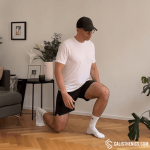
Tips
-
Maintain Upright Posture: Keep your torso upright and chest lifted throughout the movement. Avoid leaning forward or arching your back.
-
Step with Control: Focus on controlled, deliberate steps. Rushing the movement can lead to poor form and injury.
-
Knee Alignment: Ensure that your front knee stays aligned with your toes and doesn’t go past your toes as you lunge.
-
Push Through the Heel: When you push off to bring your back leg forward, drive through the heel of your front foot to engage your glutes and hamstrings effectively.
-
Engage Your Core: Keep your core engaged to help with balance and stability as you move forward.
-
Avoid Overstriding: Taking too large a step can cause your back leg to overstretch and may place unnecessary stress on your joints.
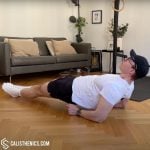
Tips
-
Ensure your elbows are positioned directly beneath your shoulders to maintain optimal stability and prevent shoulder discomfort.
-
Contract your glutes strongly to maintain hip elevation throughout the exercise.
-
Breathe steadily, inhaling deeply through your nose and exhaling slowly through your mouth to enhance endurance and relaxation.
-
Aim to extend hold durations gradually, rather than quickly progressing to avoid compromising form.
-
Use a mat or soft surface beneath your elbows for comfort and stability, reducing unnecessary discomfort.


